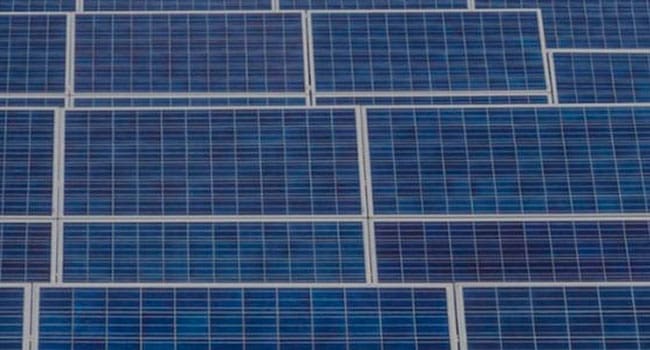Reading Time: 3 minutes
University of Alberta chemists are making new strides in research on a type of battery that could help power the future.
“Environmentally friendly renewable energy sources such as solar and wind provide a significant opportunity to alleviate the energy crisis and dramatically reduce carbon emissions,” said Hao Wang, chemistry PhD student in the Faculty of Science. “Therefore, the need for energy storage to complement these vast but intermittent sources of wind and solar energy is growing rapidly.”
Wang and his team are working to develop that complementary technology in the form of redox flow batteries (RFBs), which differ from traditional batteries because they use liquid electrolytes to store electrical energy – which makes them well suited to storing renewable energy derived from solar and wind.
“Compared with conventional lithium-ion batteries, RFBs have merits such as decoupled energy and power, scalability and high safety that suggest they are a better candidate for large-scale stationary energy storage,” said Wang, who completed the research under the supervision of chemistry professor Jillian Buriak.
Wang noted that energy storage technologies are critical to advancing renewable energy generation from sources like wind and solar power. Efficient energy storage allows these systems to generate power when the wind is blowing or the sun is shining, to create a stable reserve to draw from at night or when weather conditions change.
In a pair of new studies led by Wang, the researchers tackled different challenges facing RFB technology. The first study focused on developing new materials for the next generation of RFBs.
“One of the challenges in RFBs is the crossover of the electrochemically active chemicals through a membrane,” Wang explained. “We prepared a novel organic material able to use non-flammable and non-corrosive pH-neutral aqueous electrolyte with low-cost supporting salt to achieve aqueous symmetric RFBs with good performance, paving the way for robust and large-scale energy storage systems.”
The second study focused on electrochemical kinetics – the properties that determine how quickly power can be charged and drained from a battery, which are limited by the chemical processes that drive it. The team created a new electrochemical protocol to study and analyze the kinetics of RFBs, providing insights for their optimization and molecular design.
“Inspired by our recent findings, we are now in the process of designing and preparing a new series of organic materials to achieve high-capacity neutral aqueous RFBs,” said Wang.
Buriak credited Wang for being the real innovator on the research.
“The University of Alberta continues to attract top students like Hao Wang – Hao conceived of the idea and developed this project himself,” she said. “As the work progressed, the excitement in the lab grew, attracting support from group members who helped push Hao’s scientific vision through to success.”
The first study, Water-soluble pH-switchable cobalt complexes for aqueous symmetric redox flow batteries, was published in Chemical Communications. The second study, Redox flow batteries: How to determine electrochemical kinetic parameters, was published in ACS Nano.
| By Andrew Lyle for © Troy Media
The views, opinions and positions expressed by columnists and contributors are the author’s alone. They do not inherently or expressly reflect the views, opinions and/or positions of our publication.


